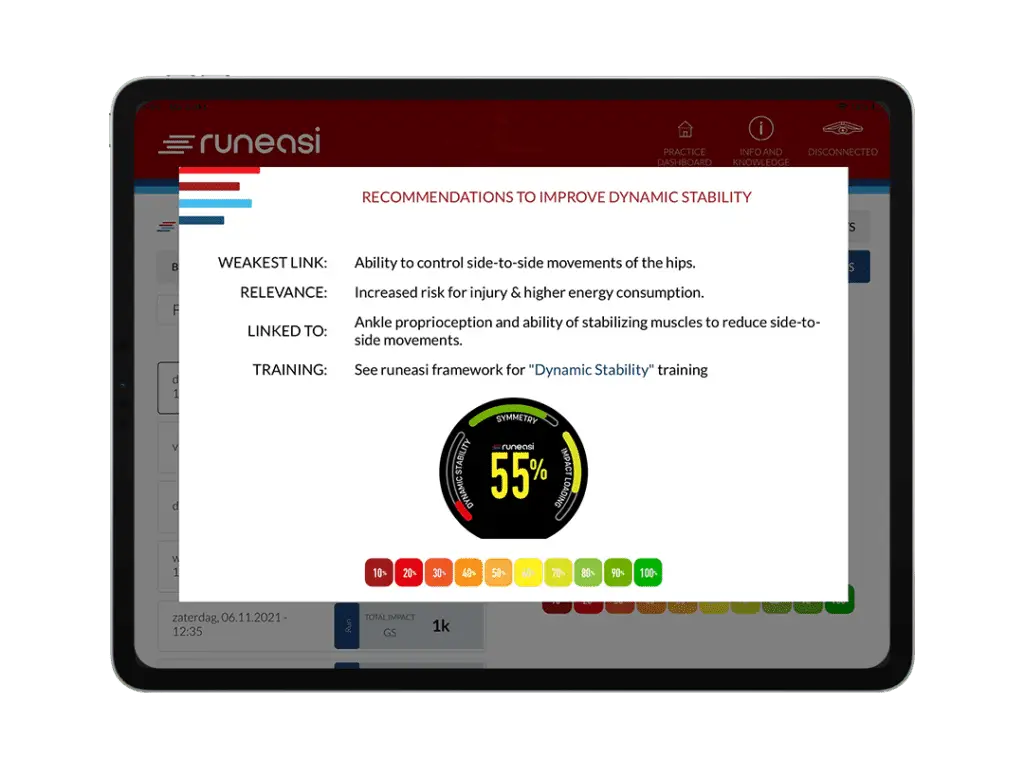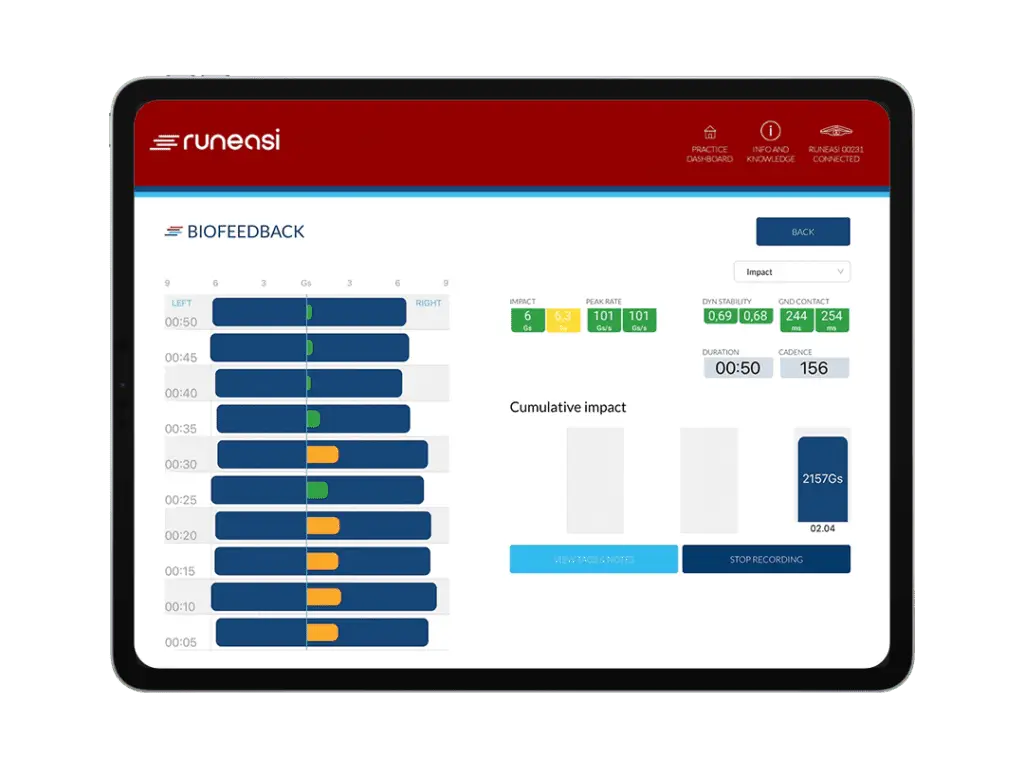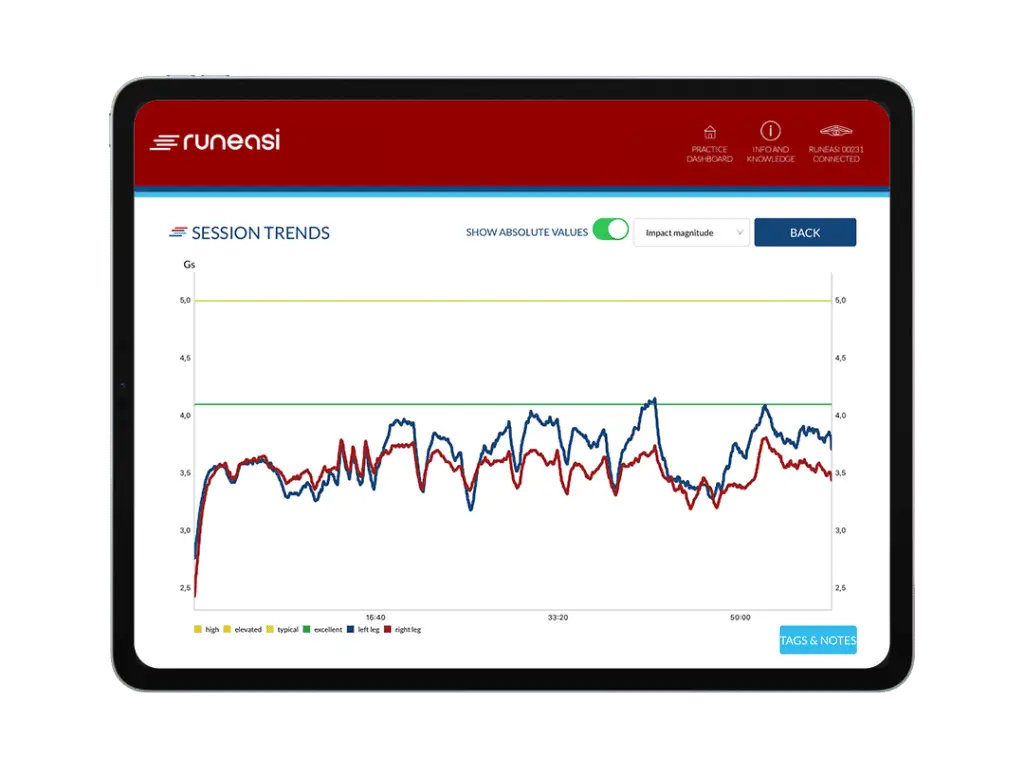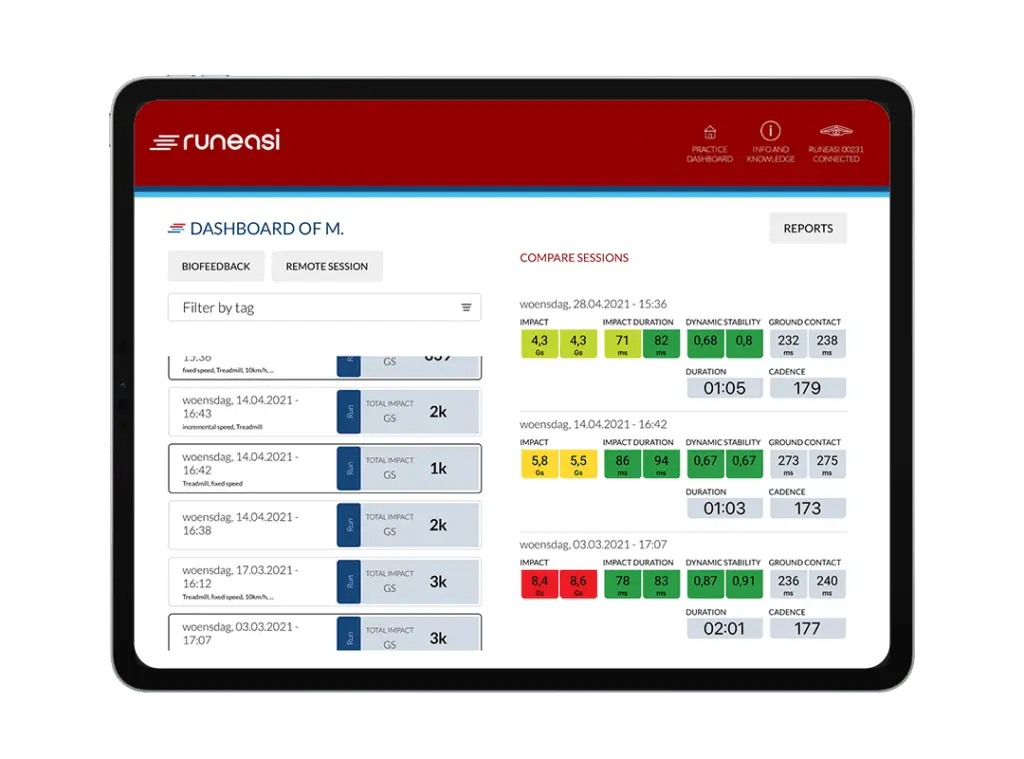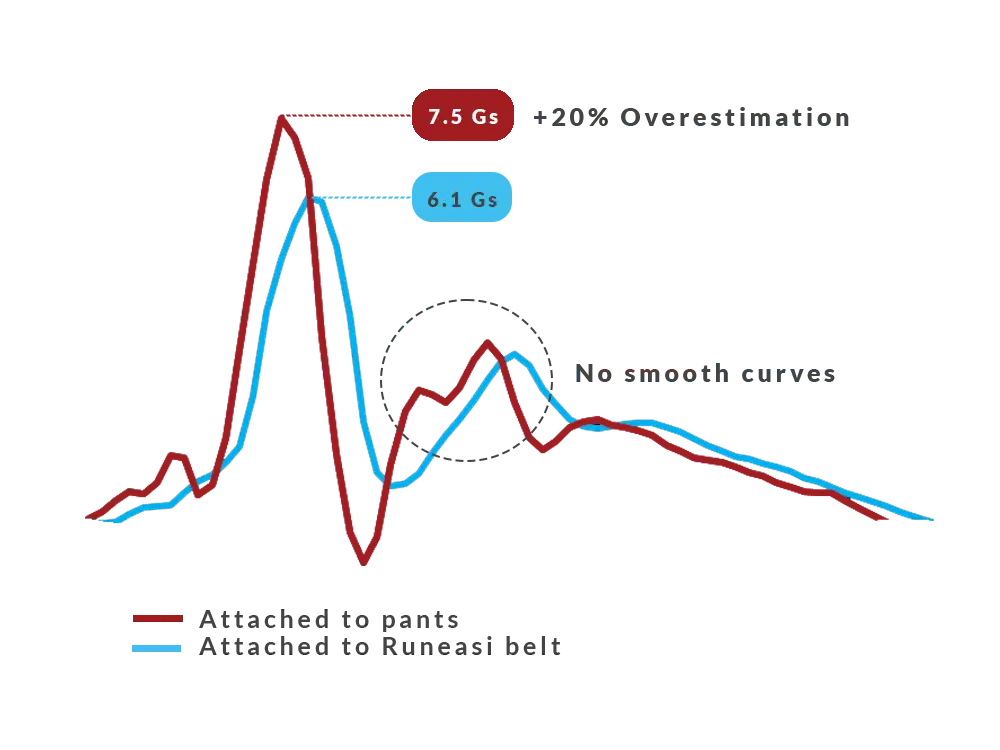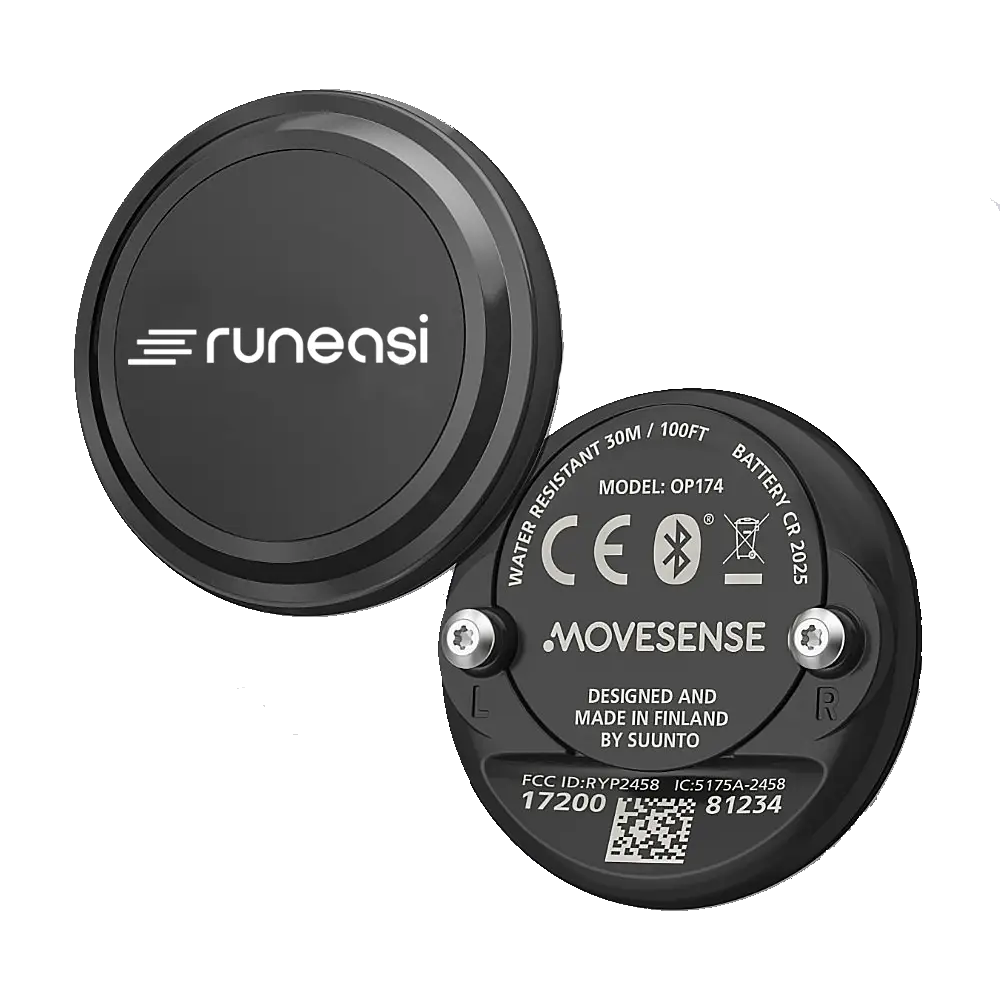How To Improve Impact Loading (ENG)
impact loading Learn about: What is Impact loading? Impact loading refers to how (much) we load our body while running. It encompasses two crucial parameters. Impact magnitude refers to the degree of impact exerted on your body while running. Impact duration measures how fast the impact travels through your legs. This serves as an essential […]
How to improve Dynamic Stability (ENG)
Dynamic stability Learn about: What is dynamic stability? This parameter measures the side-to-side wobble of your hips and provides insight into your ability to stabilize your hips while running. A lower score, shown as orange or red, indicates poor hip control which increases the work of your stabilizing muscles. This reduces your running efficiency (or […]
How downhill running could be triggering your runner’s knee

Painful knee during downhill running? A runner’s knee case How downhill could be triggering your Runner’s knee (Patellofemoral Pain Syndrome) Patellofemoral Pain Syndrome (PFPS), commonly known as ‘runner’s knee’, is a prevalent overuse injury that regularly results in relapses after returning to running. Downhill running is a major risk factor in the incidence of patellofemoral […]


